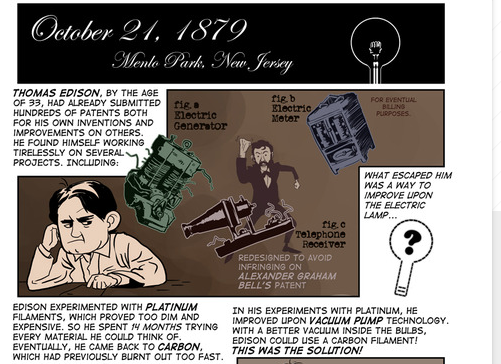
A new locomotive that cuts particulate matter emissions by 70 percent and NOx emissions by 76 percent and meets the U.S. government’s Tier 4 standards?
Very important, but not exactly very hip.
This is a problem GE is familiar with, since much of the company’s cutting edge operations are more likely to make you snooze than sit up. But GE has a track record of making high-science accessible. One way it does that is by partnering with cool artists, musicians, photographers and creators that can help turn something dry into branded works of art.
The locomotive in question, GE’s “Evolution Series Tier 4” locomotive, is the first freight engine that meets a strict government standard and cuts emissions by up to 76 percent. It’s a very important story for the brand — but one that could easily make its intended audience’s eyes glaze over. So the team inside GE’s content arm tapped Vincent Laforet, a French-American director and photographer, to shoot aerial shots of the field tests of the train so they look more like abstract works of art in a campaign that was released this week.

“We had an eye on him over at GE for a while,” said Katrina Craigwell, director of global content and programming at GE, who heads a team that takes charge of smart social and digital content for the brand. One of her primary challenges: finding cool creators to partner with in a way that dovetails with GE’s mission and image.
In this case, finding Laforet was serendipitous but also emblematic of how GE works. Linda Boff, executive director global brand marketing at GE, had become taken with a series of tilt-shift images. Craigwell went to agency Group SJR and asked it to find someone like the guy who shot those images. Matthew van Dusen, partner at the agency, happened to know the guy who took them — and even had a friend who used to work with him. “It was co-incidence and good luck,” said Van Dusen.
Another piece of good luck was when Van Dusen was at a science journalist meet-up and was introduced to Maki Naro, one of the only people in the world who makes comics about science. “He filled this weird but cool niche. We had to have him,” said Van Dusen. Naro went on to illustrate comics for GE’s social channels about big moments in science history.

Craigwell said that choosing “creators,” as they’re known, is a big part of the strategy. Often, a creator is someone the team already knows personally. For example, when GE worked with The Barbarian Group for “Drop Science,” a content-marketing gambit that turned sounds like jet engines and subsea compressors, it tapped American music producer Matthew Dear.
Colin Nagy, executive director of media and distribution at the agency, was a longtime friend of Dear’s and so brought him on board. “We thought that Matthew was the right casting because he’s so sharp, interested in science and tech and is also an amazing producer,” said Nagy.
One thing GE does not look for is people who have a history or background in pure technology, said Craigwell. “We don’t need that, we have that,” she said. “But if it’s someone fascinated by structure or shape, that works.”
In order to find good photographers who can translate complex scientific concepts into pretty Instagram pictures, the brand runs contests like the “Instagrapher” campaign. It encouraged people to take photos inspired by GE — the winner would become a GE Instagram photographer who would take pictures for specific campaigns or events. The winner was Adam Senatori, a commercial pilot who will be documenting most of the airshows in coming months for the brand.
Sometimes the process for finding artist voices is more targeted. GE found Kevin Weir, a “Tumblr celebrity” who goes by FluxMachine on a list Group SJR kept of creative people on Tumblr. The brand approached him when it wanted to do a project celebrating Thomas Edison. Weir is known for animating archival footage and so was perfect for the project.
Sometimes, however, things just don’t work out. A couple of years ago, Group SJR was working on a content project called “Choose your own adventure robot love story in space.” It tapped the comic Maki to do that one — but realized he just wasn’t a fit. GE decided to go in a different direction. The campaign is still there — Van Dusen said he hopes one day they can bring it back to life and put it out there. “It was just too weird, and sometimes we do get too weird,” said Van Dusen. “The nice thing is GE doesn’t hold it against you.”
“We have to be smart about the relationships we build with creators,” said Craigwell. “Often, it’s like giving them the keys to the brand, so it has to work seamlessly.”
More in Marketing

Best Buy, Lowe’s chief marketing officers explain why they launched new influencer programs
CMOs launched these new programs in response to the growing importance of influencers in recommending products.

Agencies create specialist units to help marketers’ solve for AI search gatekeepers
Wpromote, Kepler and Jellyfish practices aim to illuminate impact of black box LLMs’ understanding of brands search and social efforts.

What AI startup Cluely gets — and ad tech forgets — about attention
Cluely launched a narrative before it launched a tool. And somehow, it’s working.





